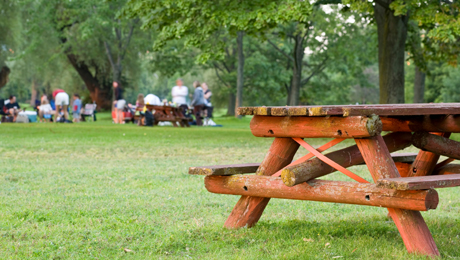
LOST-FOREST
Based upon the real Ituri Forest in Africa, this exhibit opened in 1999 and houses different animal species from the rainforests of central Africa. The exhibit begins with a forested exhibit for okapi and black duiker, then winds past a recreation of two-leaf-covered Mbuti huts with signage about the people's customs and traditions. Next, the path leads to the hippopotamus exhibit housing two hippopotamus named Funani and her daughter Amahle, which also houses tilapia, and has an underwater viewing area. After the hippos, the path passes through a bunch of bamboo before reaching a clearing where aviaries have housed great blue turaco, emerald starlings, tambourine doves, crowned eagles, and Congo peafowl.A thatched-roof gift shop and a food stand are located in a plaza near by. Immediately to the right is the African forest buffalo exhibit, which also houses De Brazza's monkey, Allen's swamp monkey, the red-tailed monkey, chimpanzees and the spotted-necked otter. The plaza leads to a bridge flanked by the buffalo exhibit on one side and an exhibit that only the small monkeys and otters can access on the other. Across the bridge is a creek where the otters can swim, with viewing both above and below the water's surface. Afterwards, the path joins the rest of the zoo.
This exhibit opened on May 23, 2009, on the site of the former Hoof and Horn Mesa area. The main feature of the exhibit is the 2.5-acre (10,000 m2) elephant habitat — more than three times the size of the zoo's former elephant exhibit, in what used to be Elephant Mesa (now the heavily panned "Urban Jungle" exhibit area). Currently a herd of 5, the herd includes three females and two twin brothers. It consists of a blended herd of 3 African bush elephants named Shaba, two new juveniles from the San Diego Zoo Safari Park and Reid Park Zoo named Tsandizkle and Inhlonipho, and 2 Asian elephants named Devi and Mary. Elephant Odyssey also features a glimpse of the past, with the Fossil Portal and life-size statues of ancient creatures of Southern California next to exhibits of their modern-day counterparts. The ancient life represented include the Columbian mammoth, the smilodon fatalis, the American lion, the Daggett's eagle, a Merriam's teratorn, the Dwarf pronghorn, the Dire wolf, the Short faced bear and the Jefferson's ground sloth. Elephant Odyssey's other animal exhibits include lions, jaguars, Baird's tapirs, guanacos, capybaras, Pronghorn, two-toed sloths, Kirk's dik-diks, secretary birds, dung beetles, 3 kinds of Rattle snakes, desert tarantulas, toads, newts, turtles, frogs, dromedary camels, horses, burros, llamas, western pond turtles, Maned wolf and the California condor.
The Fossil Portal is an artificial tar pit that periodically drains to reveal man-made Pleistocene-era bones. The path turns a corner and opens up at the Mammoth Passage Plaza, with exhibits for jaguars and lions which has a lion exhibit to the left which houses a lion named Ernest and a lioness named Miss Ellen, as well as an exhibit that has houses two-toed sloths to the right, and the tip of the elephant exhibit, with a large wading pool, straight ahead. The path continues to the left along with the pool, passing by the jaguar exhibit on the left. The northern end of the elephant pool drains into the mixed-species exhibit, which houses Baird's tapirs, capybaras, guanacos, and lammas. The path meets up with the elephant exhibit again before it reaches the Elephant Care Center, where visitors can watch keepers care for the pachyderms. Next is an exhibit for secretarybirds with grasses, a tree, and a statue of the extinct Daggett's eagle nearby. Afterward, the path goes down a crevasse with a wall embedded with vivaria for dung beetles and diving beetles, among other aquatic insects. The path tunnels below the elephant exhibit to reach the other side, where it continues between the elephant exhibit and a creek
this the best spot or area for picnic,famaly day enjoying beautiful views overlooking the lake with family or friends .
